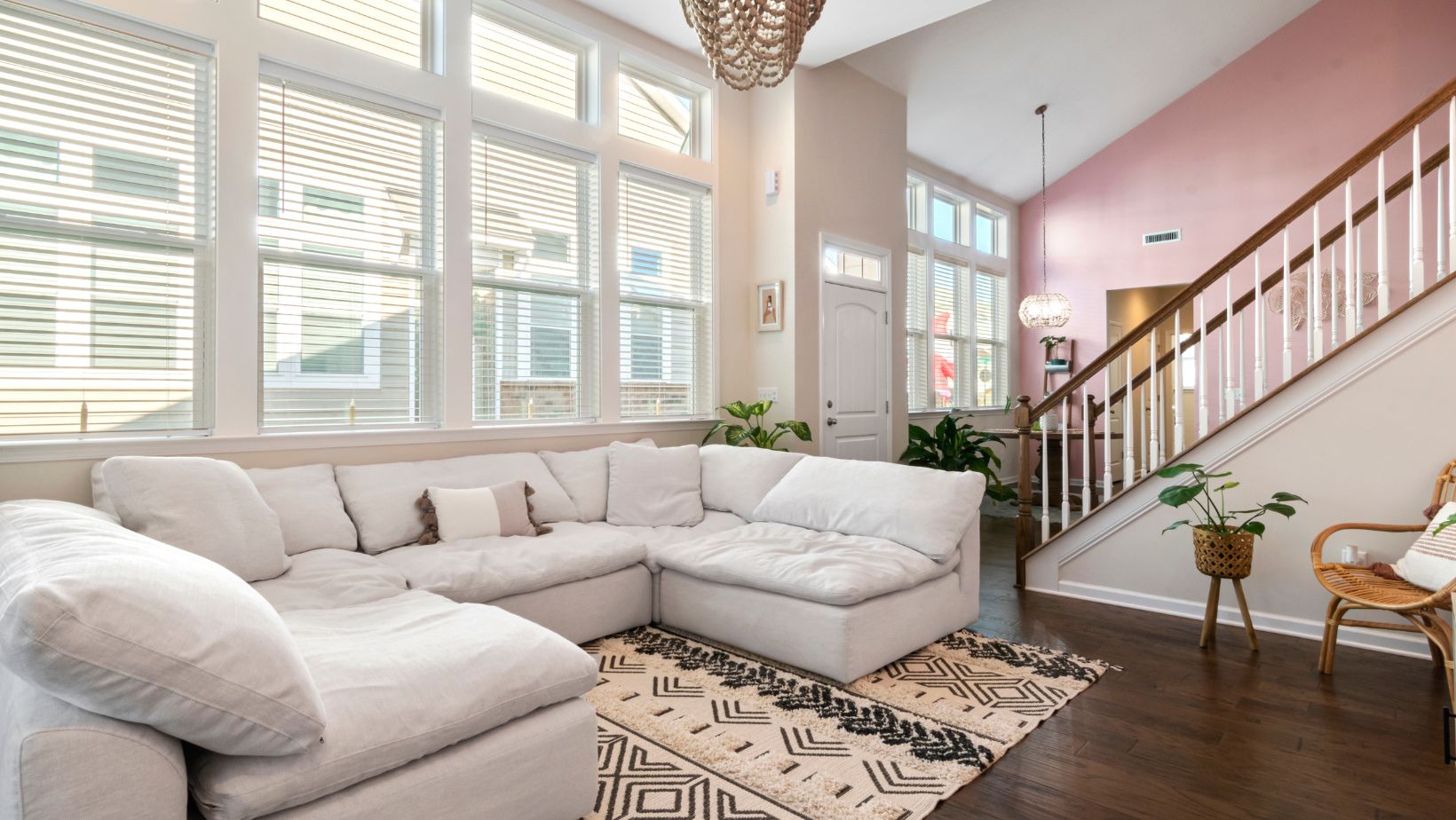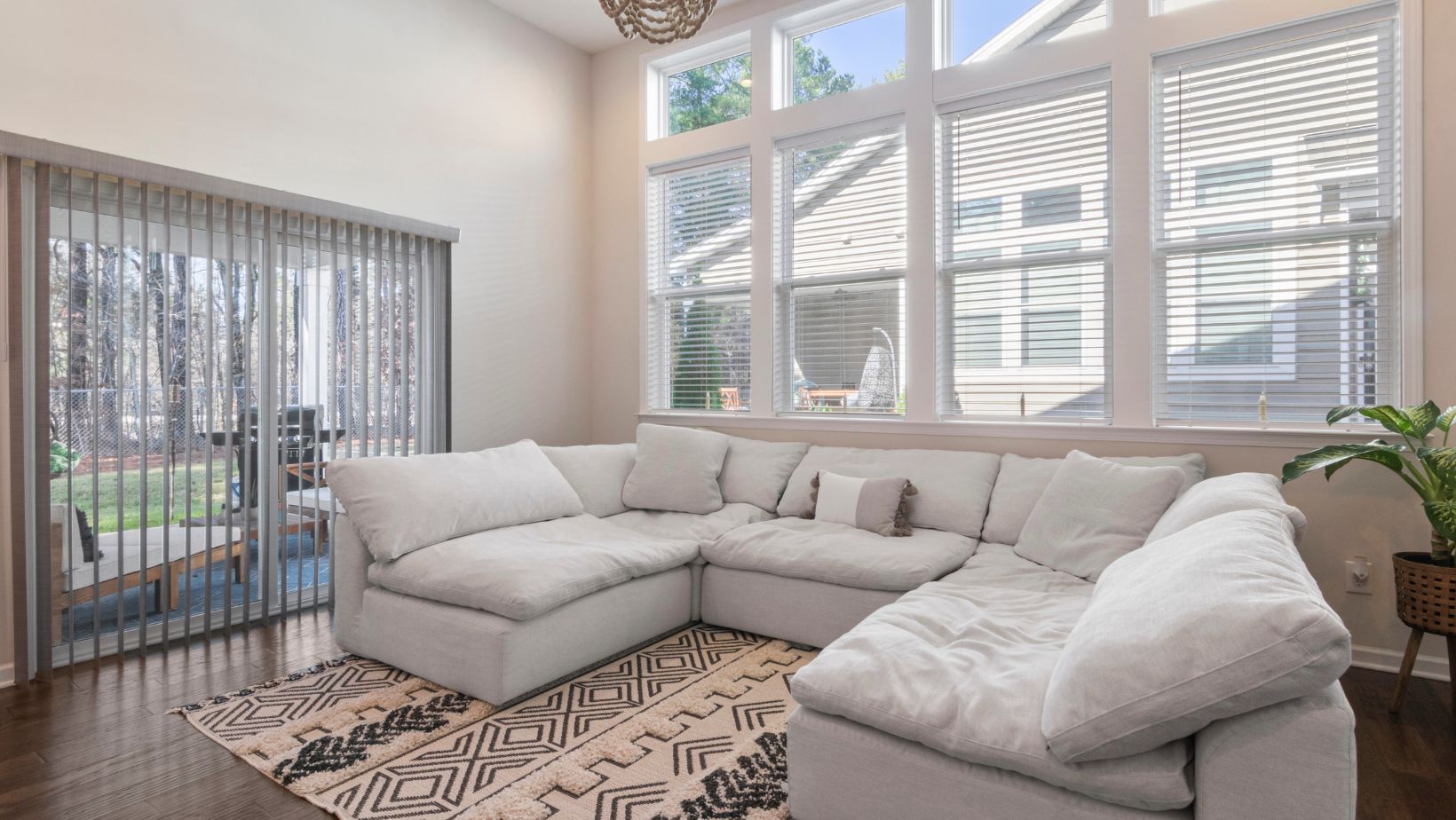A sectional sofa can be the focal point of your living room, offering comfort and versatility. However, arranging this large piece of furniture can be a daunting task.
A well-arranged sectional sofa not only maximizes space but also enhances the room’s functionality and aesthetics. Here are some tips to help you arrange your sectionals for living room to achieve an optimal layout.
Understand Your Space
Before moving the sofa, assess the room’s dimensions and architectural features. Measure the room’s length, width, and height, including windows, doors, and any other significant elements like a fireplace. This information will help you visualize the space and understand where the sectional will fit best.
Determine the Purpose
Consider how you will use the living room. Is it for watching TV, entertaining guests, reading, or combining activities? The purpose of the room will influence the placement of the sectional sofa. For example, if watching TV is a primary activity, the sofa should face the television.
Select the Focal Point
Identify the room’s focal point, such as a fireplace, TV, or a large window with a view. 
Consider Traffic Flow
Maintaining a good traffic flow is crucial. Ensure enough space for people to move around the room without obstruction. Aim for pathways that are at least 3 feet wide. Position the sectional so that it does not block the natural flow of movement within the room.
Experiment with Different Configurations
Sectional sofas often come in modular pieces that can be rearranged. Experiment with different configurations to see what works best for your space. Common layouts include:
- L-Shaped Configuration: Ideal for corner placement, maximizing seating while freeing up central space.
- U-Shaped Configuration: Great for larger rooms, creating an intimate seating area ideal for conversations and gatherings.
- Chaise-End Configuration: Provides a lounge area while keeping the arrangement open and airy.
Balance the Room
Balance the room by ensuring the sectional sofa does not overpower the space. Add other pieces of furniture like coffee tables, side tables, and chairs to create a harmonious look. Incorporate elements like rugs, lamps, and artwork to add layers and depth to the room.
Utilize the Right Accessories
Accessorizing your sectional sofa can enhance its appearance and functionality. Throw pillows, blankets, and ottomans can add comfort and style. Choose accessories that complement the sofa’s color and style, creating a cohesive look.
Consider the View
Think about the view from the sectional. If you have a beautiful garden or a cityscape, position the sofa to take advantage of the view. This can create a more enjoyable and relaxing atmosphere in the living room.
Create Zones
Use the sectional to create different zones if you have a large living room.
Leave Space for Adjustment
Finally, leave some flexibility for adjustments. Certain tweaks can improve comfort and usability as you live with the arrangement. Don’t be afraid to make changes as needed.
Conclusion
Arranging a sectional sofa for an optimal living room layout involves understanding your space, determining the room’s purpose, and experimenting with different configurations. By considering traffic flow, balancing the room, and utilizing the right accessories, you can create a living room that is both functional and aesthetically pleasing. Remember, the goal is to create a comfortable and inviting space that meets your needs and enhances your lifestyle.

